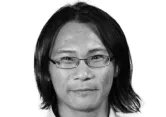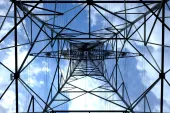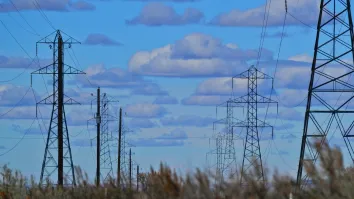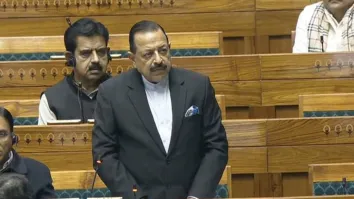Renewable energy outlook for the Year of the Fire Rooster
By Eric HoWelcome to the year of the fire rooster, a year unlike the previous year of the monkey which followed the path of curiosity, the rooster is disciplined and takes charge. The dominating fire element in this year of the rooster expects to bring natural prosperity to fire industries and water industries, as water subdues fire. The energy sector including renewable energy, stock market, and finance are fire elements whilst water element industries are logistics, communication, and shipping.
In 2016, renewable energy continued its growth momentum. Fierce competition resulted in the lowest level bids for renewable energy generation worldwide. Costa Rica headlined 250 days running entirely on renewable energy. Clearly, renewable energy is no longer an alternative energy, and how will the momentum in renewable energy be in the year of the rooster?
Solar panel prices are dropping rapidly resulting in aggressive costs for solar projects in India, Dubai, and Chile last year. Solar prices have fallen to a point that it is now competitive with traditional power sources. India saw installed solar capacity almost doubled that of a year ago to breach 10GW mark as it unveiled the world’s largest solar farm with a capacity of 648MW in the latter part of 2016. Growth in India is expected to continue in 2017 with a strong government mandate, as in Africa with the World Bank’s Scaling Solar program which aims to bring privately funded grid-connected solar projects.
63GW of wind capacity was installed worldwide in 2015 and the same number is expected in 2016. By mid-2016, global wind capacity reached 456GW, adding 21GW in the first six months. Already the world leader in installed wind capacity, China is expected to add some 19GW in 2016 to its 2015 lead of 129GW. Nevertheless, wind power curtailment across China also grew as a result of available coal capacity and declining electricity load. Wind power capacity in 2017 is expected to remain about the same as the last two years, with Mexico, Turkey, Canada, and Latin America as the higher growth markets as uncertainties plague China.
Hydropower, with its longer gestation periods and greater development risks, has not seen as much publicity as its renewable counterparts of wind and solar. A technologically mature industry, hydropower has well-established markets in Europe and North America. In 2015, hydropower increased by 33GW bringing its worldwide installed capacity to 1,211GW, with over a quarter in China. Large-scale hydropower continues to be an attractive option for developing countries as many use excess energy as an exportable commodity, as seen in Laos, Bhutan, and Nepal and several sub-Saharan African countries.
The global installed small hydropower (SHP, <10 MW) capacity is estimated at 78GW in 2016, representing approximately 6.5% of the total hydropower capacity. Whilst China dominates the SHP landscape, owning 51% of the world’s SHP installed capacity, Asia still remains the region with the highest undeveloped SHP potential, especially China, Japan, and Southeast Asia.
Meanwhile in Southeast Asia…
Thailand leads the region in solar power capacity with 2.2GW installed in November 2016. Thailand targets 25% renewable energy generation by 2021 through Feed-in-Tariff (FiT) and competitive tender incentives as well as tax incentives.
Similar to Thailand, the Philippines has a tradition of having a good regulatory backbone in the power sector, approved 526MW of installed solar power capacity in a tightly contested FiT incentives. Whilst interest in solar power remains high among private developers, the subsequent wave of subsidies which has been recommended to the government has not been rolled out amidst concerns over higher pass-through costs to end consumers.
Indonesia and Vietnam have clear and ambitious renewable energy targets to fire up green energy generation. Indonesia sets 19% renewable energy target for 2019 as it expects its first wind farm to be in operation later this year. A new regulation No.12/2017 was issued on 31 January 2017 on the determination of renewable energy prices. Vietnam has historically been committed to hydropower to meet its raising demand, however competing needs for water resources and global warming have sharpened the focus on other sources of energy.
Vietnam commitment to hydropower is also reflected in its latest release of the Revision of the National Power Development Masterplan (PDP VII) in 2016. Vietnam expects to raise the share of other renewables excluding hydropower to 5% by 2020, and includes a target to build 850MW and 800MW of solar and wind capacity respectively by 2020.
In Singapore’s liberalised market environment, power generation investments are commercially driven, thus government subsidies are absent. Declining module and system costs, change in customer mindset, and creative business models prompted the rapid emergence of solar power in the city-state. Solar energy remains the most promising renewable energy source for Singapore when it comes to electricity generation. Singapore has installed about 100MW of solar capacity and aims to increase that to 350MW by 2020.
Malaysia approved projects to generate about 1,200MW of electricity from renewable sources under its FiT system which focusses on biomass, biogas, SHP, and solar. In 2016, solar capacity stands at 291MW, with the nation expecting to add 1GW by 2020.
Despite government initiatives and FiT programs, most Southeast Asian countries are unlikely to meet their near-term targets due to weak regulatory environment for renewable energy and unattractive FiT. Renewable energy developers also face challenges in obtaining grid connection, financing, and permits. Financial constraints and social pressure further limit governments’ ability to provide subsidies and threaten its renewable energy plans.
The rooster is strong metal element and with fire above the underlying metal symbolises a year of optimism, innovation, and progress. There is still conflict and disharmony as fire melts metal, however following traits of the rooster of punctuality, optimism, persistence, confidence, and innovation will bring solutions to obstacles.




















 Advertise
Advertise






